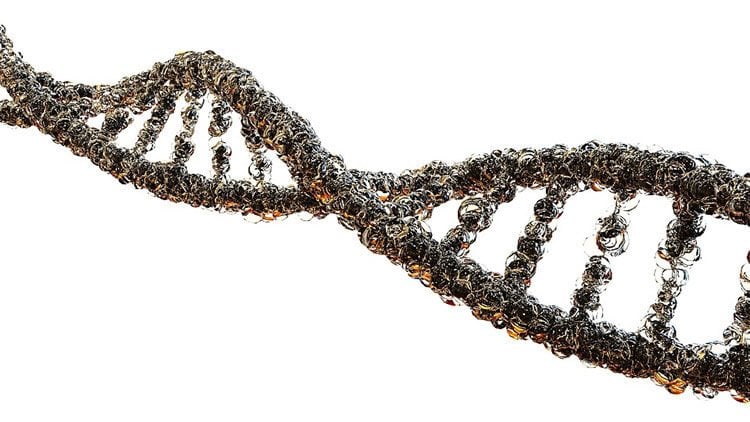Summary: Researchers report there may be a molecular placental pathway that allows females to be more resilient to maternal stress.
Source: University of Maryland.
Researchers have recently begun to realize that biological sex plays a key role in disease risk. Sex plays a role in hypertension, diabetes, arthritis – and in many neurological and psychiatric disorders. Depression and anxiety affect females more, while neurodevelopmental disorders, including autism spectrum disorders, early onset schizophrenia, and attention deficit hyperactivity, affect more males. Males are also more sensitive to prenatal insults, such as gestational stress, maternal infection and drug exposure.
To better understand the molecular underpinnings of this disparity, Tracy Bale of the University of Maryland School of Medicine, along with several colleagues, focused on a molecule that plays a key role in placental health. In a study of mice, they found that the molecule, O-linked N-acetylglucosamine transferase (OGT) works by establishing sex-specific patterns of gene expression.
The study was published this week in the journal Nature Communications.
OGT seems to work via an epigenetic modification that broadly controls transcription, H3K27me3. Epigenetics is the study of changes in how genes are expressed. Dr. Bale showed that high levels of H3K27me3 in the female placenta produce resilience to stress experienced by the mother. This indicates at least one molecular pathway that allows females to be more resilient to maternal stress than males.
“This pathway could help explain why we see this profound neurodevelopmental difference in humans,” said Dr. Bale. “OGT and H3K27me3 in the placenta are crucial to a lot of protein encoding that occurs during pregnancy, and so this process has a lot of downstream effects. The OGT gene is on the X chromosome, and seems to provide a level of protection for the female fetus to perturbations in the maternal environment.”

Dr. Bale has focused much of her research on the links between stress and subsequent risk for neurodevelopmental disorders, including autism and schizophrenia in offspring. Her previous work on the placenta has found novel sex differences that may predict increased prenatal risk for disease in males.
She has previously found that, in mice, a father’s stress can affect the brain development of offspring. This stress can alter the father’s sperm, which can alter the brain development of the child. Dr. Bale has also found that male mice experiencing chronic mild stress have offspring with a reduced hormonal response to stress; this response has been linked to some neuropsychiatric disorders, including PTSD. This suggests that even mild environmental challenges can have a significant effect on the health of offspring.
Source: David Kohn – University of Maryland
Publisher: Organized by NeuroscienceNews.com.
Image Source: NeuroscienceNews.com image is in the public domain.
Original Research: Open access research for “Placental H3K27me3 establishes female resilience to prenatal insults” by Bridget M. Nugent, Carly M. O’Donnell, C. Neill Epperson & Tracy L. Bale in Nature Communications. Published July 2 2018.
doi:10.1038/s41467-018-04992-1
[cbtabs][cbtab title=”MLA”]University of Maryland”Genetic Mechanism Behind Why Males Are More At Risk of Neurodevelopmental Disorders.” NeuroscienceNews. NeuroscienceNews, 3 July 2018.
<https://neurosciencenews.com/genetics-neurodevelopment-gender-disparity-9509/>.[/cbtab][cbtab title=”APA”]University of Maryland(2018, July 3). Genetic Mechanism Behind Why Males Are More At Risk of Neurodevelopmental Disorders. NeuroscienceNews. Retrieved July 3, 2018 from https://neurosciencenews.com/genetics-neurodevelopment-gender-disparity-9509/[/cbtab][cbtab title=”Chicago”]University of Maryland”Genetic Mechanism Behind Why Males Are More At Risk of Neurodevelopmental Disorders.” https://neurosciencenews.com/genetics-neurodevelopment-gender-disparity-9509/ (accessed July 3, 2018).[/cbtab][/cbtabs]
Abstract
Placental H3K27me3 establishes female resilience to prenatal insults
Although sex biases in disease presentation are well documented, the mechanisms mediating vulnerability or resilience to diseases are unknown. In utero insults are more likely to produce detrimental health outcomes for males versus females. In our mouse model of prenatal stress, male offspring experience long-term dysregulation of body weight and hypothalamic pituitary adrenal stress axis dysfunction, endophenotypes of male-biased neurodevelopmental disorders. Placental function is critical for healthy fetal development, and we previously showed that sex differences in placental O-linked N-acetylglucosamine transferase (OGT) mediate the effects of prenatal stress on neurodevelopmental programming. Here we show that one mechanism whereby sex differences in OGT confer variation in vulnerability to prenatal insults is by establishing sex-specific trophoblast gene expression patterns and via regulation of the canonically repressive epigenetic modification, H3K27me3. We demonstrate that high levels of H3K27me3 in the female placenta create resilience to the altered hypothalamic programming associated with prenatal stress exposure.






